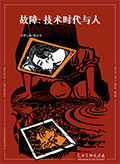

贡布里希曾经从普林尼《自然史》中记载的“阿佩莱斯之线”的典故出发, 发掘出一套利用光线塑造体积感的预成图式, 由此分析了中世纪工匠与文艺复兴时期画家对此图式的修正与发展。然而, 再现性绘画传统的历史并非一部自然主义的进化史, 画家的观察与分析并不一定仅仅是为了塑造物象的体积感以制造出逼真的错觉。光线有时应当被视为一种充满偶然性的绘画效果, 而非用于再现自然的视觉惯例, 前者在画家知觉的运作过程中也起到相当重要的作用。贡布里希的理论模型在一定程度上回避了光线问题的这一重价值, 过早收束于十五世纪西欧南北绘画的分野, 而未能触及此后的画家在光线上的创见。如何在依然秉持再现论的基本前提之上为贡布里希提出的光线理论重新建立适用性?本文尝试从沃尔海姆的美学理论出发, 结合文艺复兴时期的几部绘画理论文本以及达尼埃尔·阿拉斯对维米尔作品的研究, 领会光线问题的另一条线索。
Starting from the anecdote of the “Apelles’ Line” recorded in Pliny’s Natural History, Gombrich excavated a schema of light and shadow which serves to paint three-dimensional shapes, and analyzed the corrections made by Medieval and Renaissance masters to this schema. However, the history of traditional representational painting is not only an evolutionary history of naturalism, and the observation and analysis of painters are not necessarily just to shape the volume of objects to create realistic illusions. Light, as a painting effect with ambiguity, whose aesthetic value has been overlooked, plays a significant role in the perception even though it sometimes distracts artists from reality. Gombrich' s theoretical model to some extent avoided the value of the issue of light, prematurely limiting itself to the division of North and South painting in Western Europe in the 15th century, and failing to touch on the creative ideas of subsequent painters in light. How do we re-establish the applicability of Gombrich' s theory of light while still adhering to the basic premise of representational art? This article attempts to start from Wollheim' s aesthetic theory, combined with several theoretical texts on painting in the Renaissance and Daniel Arasse' research on Vermeer' s works, to understand another clue to the issue of light.